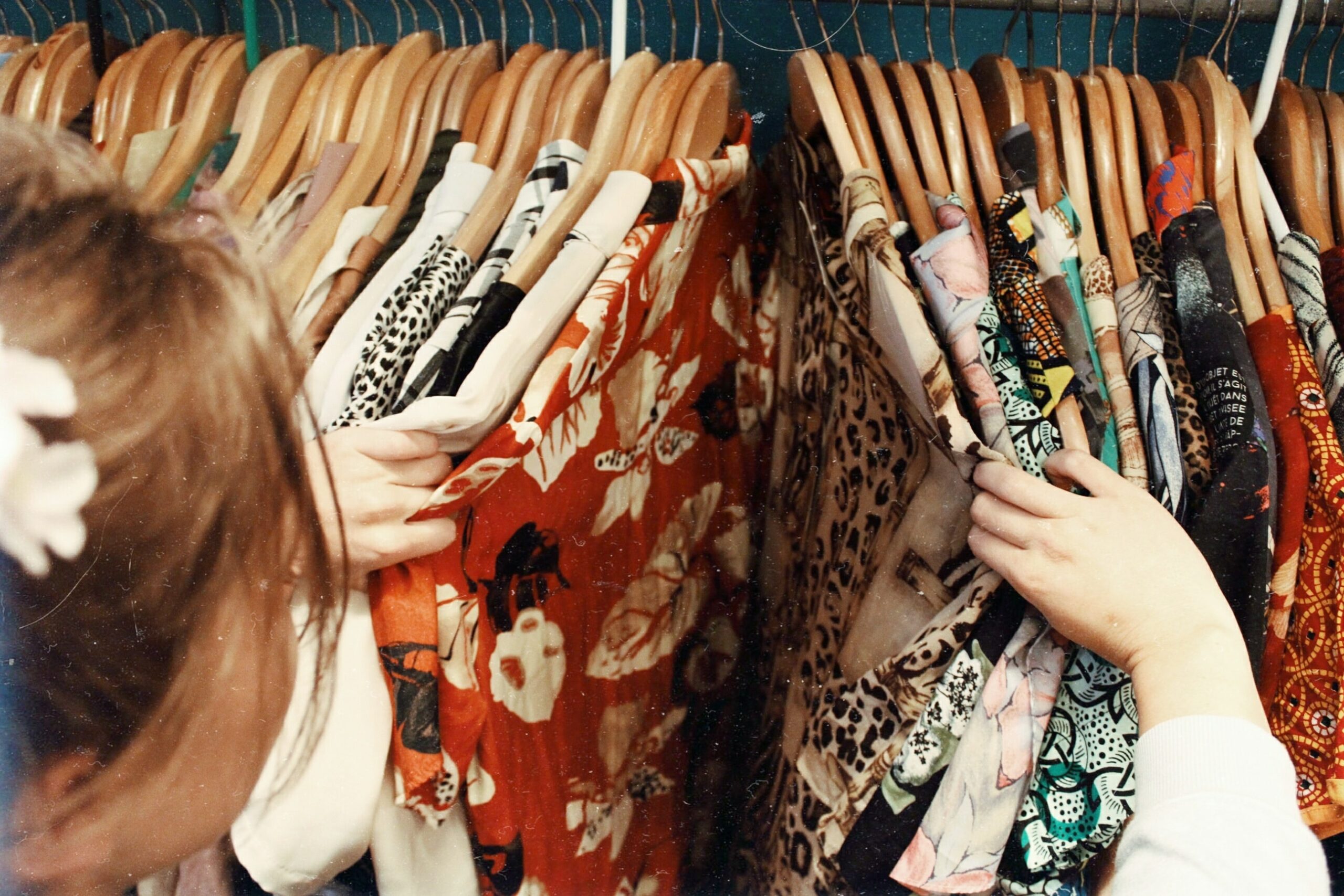
Turning a blind eye
Tascha Von Uexkull exposes the unseen social and environmental cost of fast fashion.
Think about the clothes you are wearing right now. Do you know what they are made of, where, or by whom? If you answered no to any of these questions, you are sadly not alone.
Your natural instinct may be to search for the answer on the label inside your clothing, but even this may lead you down the wrong path. In a 2019 Circle Economy study, out of over 10,000 garments tested, 41% of garment composition labels didn’t match the composition of the garment.
Similarly, the country of origin on your clothing label can also be deceptive, referring to the country in which the ‘last substantial transformation’ to the product was made, as opposed to its primary place of creation. This came to the fore in an infamous case concerning the high end fashion and accessories brand Louis Vuitton a few years ago, when it was revealed that many of its shoes stamped as ‘made in Italy’ are in fact produced in Transylvania, with the soles of the shoes added in Italy to justify the label.
So what is the significance of all this? Well, inaccuracies of this kind restrict our ability to make informed decisions about the clothes we purchase.
Attempts to buy more sustainable, locally produced fabrics may be well-meaning but are useless if the information on which we base these decisions is faulty.
Yet perhaps the biggest issue lies not in the country of origin but in the conditions of the workers who produce our fashion pieces. When we consider who makes our clothes, we invariably think in terms of brands. The high street brands we choose are reflective of who we are and who we would like to be, creating an intangible self-illusion, as though our desired identities were sewn into the very lining of the garments.
But it is only when horrific incidents like the 2013 Bangladesh Rana Plaza clothing factory collapse, which killed 1,134 workers and injured over 2000, hit the news that we realise how illusory these constructs of individualism really are.
Labels such as Primark, Mango, Walmart, and Benetton, which we might easily distinguish when high street shopping, were found in the smoking embers amid the corpses of the workers.
In such circumstances, the apparently watertight divisions between brands seem absurd.

Fast fashion functions through the continual and rapid renewal of catwalk fantasies leading to excessive volumes of cheaply manufactured clothing. Up until the mid-20th century, the fashion industry followed the four seasons with designers planning months in advance to predict the trends for each collection. Now, fast fashion brands create as many as 52 micro-seasons a year.
This drastic increase in production and subsequent waste has made environmental experts extremely concerned, calling for a ‘total abandonment of the fast-fashion model’ to prevent environmental catastrophe.
Fortunately, since the Rana Plaza crisis there has been an effort to make the what, the where and the who more transparent so that fashion consumers can make more informed decisions. In 2016, the not-for-profit global movement Fashion Revolution launched its Fashion Transparency Index, which ranks the world’s largest fashion brands and retailers according to how much they reveal about their social and environmental policies, practices and supply chains.
The 2020 report highlights that brands participating in the Index are more transparent than those who don’t take part, though it’s difficult to ignore the fact that still more than half of major brands and retailers lack transparency on social and environmental issues.
Perhaps the most worrying trend is the 30 brands’ scores which have not changed from 2017-2020. This list includes such big names as Walmart and Gap. As Walmart was one of those labels found in the Rana Plaza rubble, its subsequent non-response somewhat undermines the idea that the disaster has precipitated significant change within the industry. It worries me that change is moving so slowly when the fast fashion industry continues to produce more and more at breakneck speed.
The 2018 Apparel Industry Overproduction Report revealed that global clothing production has doubled in the past 15 years to 102 million tons.
Fast fashion brands are undoubtedly accountable, but there’s no doubt our own increased consumption habits as fashion buyers are also to blame.
We purchase approximately 60% more clothing annually than in 2000, abandoning garments after fewer and fewer wears.

Unfortunately, even our attempts to ethically dispose of our garments by donating or recycling them are stymied by fast fashion’s reliance on quick and inexpensive production methods and materials. In a continuation of the long chain of unsustainability, only 10-30% of what is donated to UK charities is actually sold in the UK, with the rest destined for landfill or overseas export.
Meanwhile, sustainability campaigns from a number of well-known high street brands continue to adopt performative measures to reassure us that our buying habits are justifiable. H&M’s campaign in particular has been criticised for its vague, possibly misleading, and unmeasurable references to sustainability. This practice is so prevalent in the fashion world that it even has a term: greenwashing.
In spite of H&M’s convincing videos advertising their sustainability campaign, Claudia Marsales, the head of Markham Textile Recycling Waste Program, predicts that it would take H&M 12 years to recycle what they sell in 48 hours.
Transparency, then, seems not only lacking in the production of clothing, but in its disposal too.
Fashion Revolution is hopeful that the Coronavirus crisis will alert us to our unsustainable buying habits. In the UK clothing sales plummeted by 34% last March, coinciding with England’s national lockdown as people sat at home with less desire for new garments.
But is this the genuine, long-term shift in consumer habits that we need? The bizarre craze for revenge shopping in China, in which consumers deprived of retail therapy over months in lockdown flocked to major brand outlets to compensate with excessive spending sprees, is concerning. More recently, the surge in fashion sales in the UK following the announcement of a roadmap out of lockdown seems to suggest the fall in clothing sales is just a temporary blip.
It is also a concern that the continuation of social distancing regulations could see more consumers choosing online shopping over store browsing. Anecdotally, I remember a number of my friends at university ordering the same garment online in multiple sizes to see which fitted best, before returning the others. Little did they know they were contributing to yet another unseen environmental cost: unable to process the subtleties of various returned items, companies send almost all returns to the landfill.
In spite of the best efforts of the fast fashion industry to cover its tracks, it’s clear that truth can be uncovered once you scratch the silky surface.
It is tempting to abandon hope when contemplating such a vast and multifaceted issue, but it’s key that we don’t. Individual action may not be enough to overturn the climate crisis, but as consumers we are extremely powerful.
Fast fashion brands rely on our apathy and ignorance when it comes to the who, what, and where of our garments. In choosing to take accountability for how we shop, we can disrupt this unsustainable cycle. As Livia Firth, the founder of Eco-Age, argues: “Only by slowing down will we […] show them that the consumer doesn’t want it.”
So let’s stop kitting out ideal versions of ourselves in fleeting trends and invest instead in self-acceptance … and maybe even a wardrobe that we’ll love for a lifetime.

Like what you’ve read? Consider supporting the work of Adamah by making a donation and help us keep exploring life’s big (and not so big) issues!
